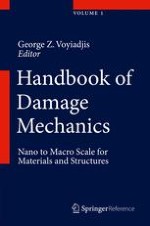2015 | OriginalPaper | Buchkapitel
24. Damage Prediction in Metal Forming Process Modeling and Optimization: Simplified Approaches
verfasst von : Ying-Qiao Guo, Yuming Li, Boussad Abbès, Hakim Naceur, Ali Halouani
Erschienen in: Handbook of Damage Mechanics
Verlag: Springer New York
Aktivieren Sie unsere intelligente Suche, um passende Fachinhalte oder Patente zu finden.
Wählen Sie Textabschnitte aus um mit Künstlicher Intelligenz passenden Patente zu finden. powered by
Markieren Sie Textabschnitte, um KI-gestützt weitere passende Inhalte zu finden. powered by
